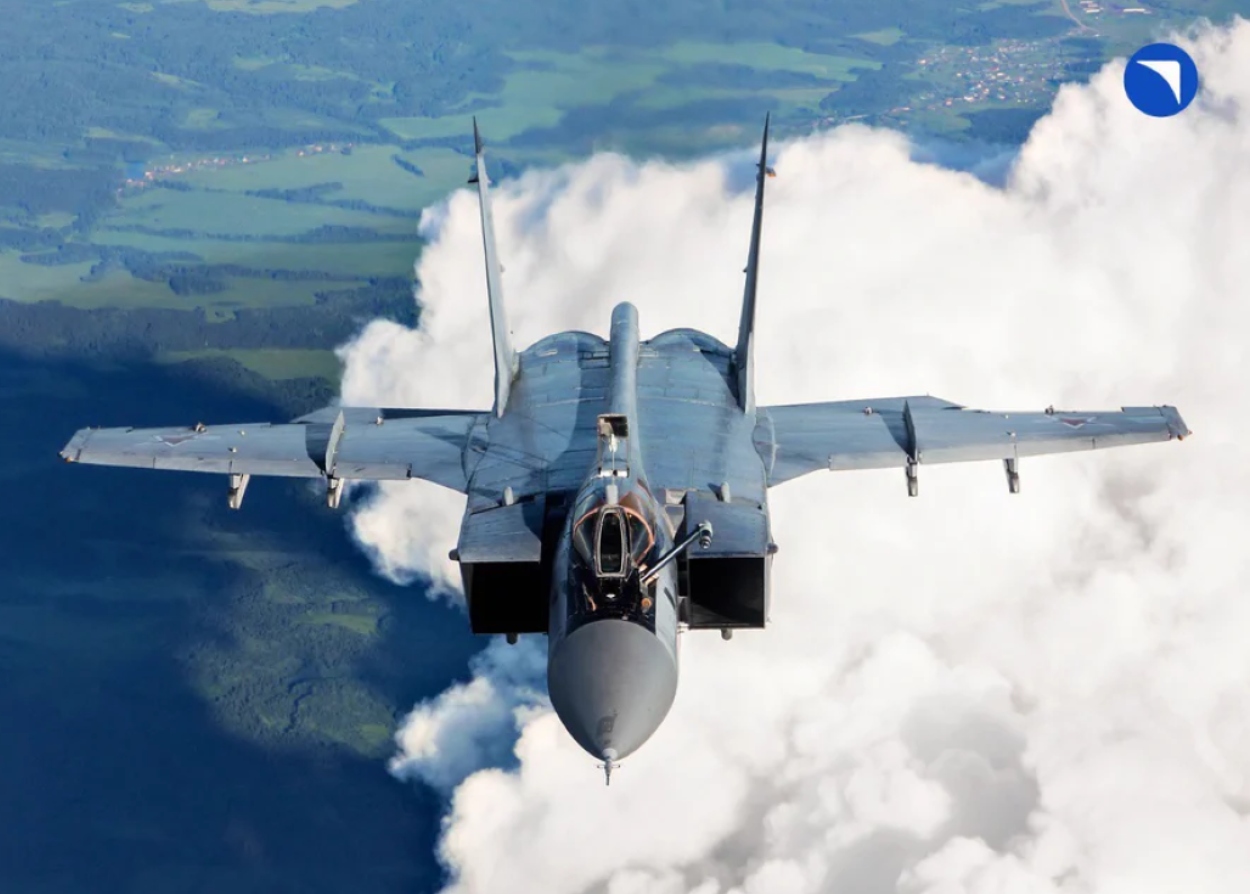The Russian Ministry of Defense has announced that MiG-31 fighter jets conducted mock interception of simulated enemy cruise missiles over the Chukchi Sea during the Finval-2023 exercises.
Big, Bada, Boom! Ukraine’s MiG-29 Fighter ‘Succumbs’ To Russia’s Lancet-3 Kamikaze Drone: Watch
Russia’s state-run TASS media outlet, citing a statement from Russian MoD, highlighted a strategically crucial segment of the exercise, which revolved around honing air defense tactics on the Chukotka Peninsula to counter potential aerial threats posed by a theoretical adversary.
During this phase of the exercise, two MiG-31 fighter jets on active duty at the Anadyr airfield were promptly dispatched into action. These two fighter aircraft intercepted and neutralized mock cruise missiles, simulating a scenario where enemy air assets were approaching the region.
The MiG-31 crews successfully engaged and destroyed the incoming aerial targets utilizing air-to-air missiles. Upon completing their designated objectives and ensuring the security of the Chukotka Peninsula, the MiG-31 fighters concluded their mission and safely returned to their home airfield.
The drill was aimed to showcase the readiness and capability of the Russian defense forces to protect their airspace and swiftly respond to any airborne threats in the region.
The MiG-31, a supersonic interceptor aircraft, was designed by the Mikoyan Design Bureau for the Soviet Air Forces. It served as a successor to the earlier MiG-25 “Foxbat” and earned its status as one of the world’s fastest combat aircraft.

It is anticipated that the MiG-31 aircraft will continue to serve on active duty until at least 2030 and potentially even beyond.
The MiG-31 aircraft is reportedly to play a pivotal role in the ongoing conflict in Ukraine by employing the long-range R-37M air-to-air missile, which has been instrumental in downing several Ukrainian military aircraft.
Moreover, deploying MiG-31K aircraft armed with Kinzhal hypersonic missiles has severely damaged critical Ukrainian infrastructure and other strategically vital locations during the ongoing conflict.
Finval-2023 Exercise
The “Finval-2023” exercise, organized by the Pacific Fleet, is currently underway to safeguard the communications of the Northern Sea Route, the Russian Ministry of Defense said.
These operations span the waters of the Chukchi and Bering Seas and activities on the Chukotka Peninsula. The exercises are being conducted under the guidance of Admiral Nikolai Evmenov, the Commander-in-Chief of the Russian Navy.
In these extensive military drills, thousands of military personnel and a diverse array of more than ten military units participate.
This includes a range of assets such as surface ships, support vessels, submarines, aircraft, helicopters from naval aviation, and coastal missile systems like “Ball” and “Bastion.”
The exercises involve highly mobile wheeled and tracked armored vehicles capable of traversing challenging terrain.

The successful launch of cruise missiles was also achieved throughout these maneuvers, effectively striking a difficult target position in the northeastern region of the Bering Sea.
During the exercises, the defense ministry said that Vulcan, Granit, and Onyx cruise missiles were launched over considerable distances, spanning hundreds of kilometers, to precisely target and engage simulated enemy ships in the Bering Sea.
The Russian MoD also pointed out that all aspects of the exercise are geared towards enhancing defensive capabilities and refining the readiness of the forces and troops for potential operations along the northeastern borders of Russia.
These exercises serve as a clear illustration of Moscow’s unwavering dedication to upholding its military presence in both the Arctic and the Far East.
It also underscores Russia’s capacity to project power in these regions despite the considerable strain on its armed forces due to the prolonged 18-month conflict in Ukraine.
In 2022, Russia announced ambitious plans to invest nearly $30 billion by 2035 in developing the Northern Sea Route.
This route has become increasingly viable as climate change has led to a reduction in Arctic sea ice. It spans the northernmost part of Russia, stretching from Murmansk, near the borders with Norway and Finland, to the Bering Strait near Alaska.
President Vladimir Putin emphasized the strategic significance of this route during a recent speech to the BRICS group of countries.
He outlined Moscow’s intentions to construct new ports and fuel terminals and expand its icebreaker fleet, underscoring the commitment to leveraging the economic and geopolitical potential of the Northern Sea Route.
- Contact the author at ashishmichel(at)gmail.com
- Follow EurAsian Times on Google News




